White Tailed Deer
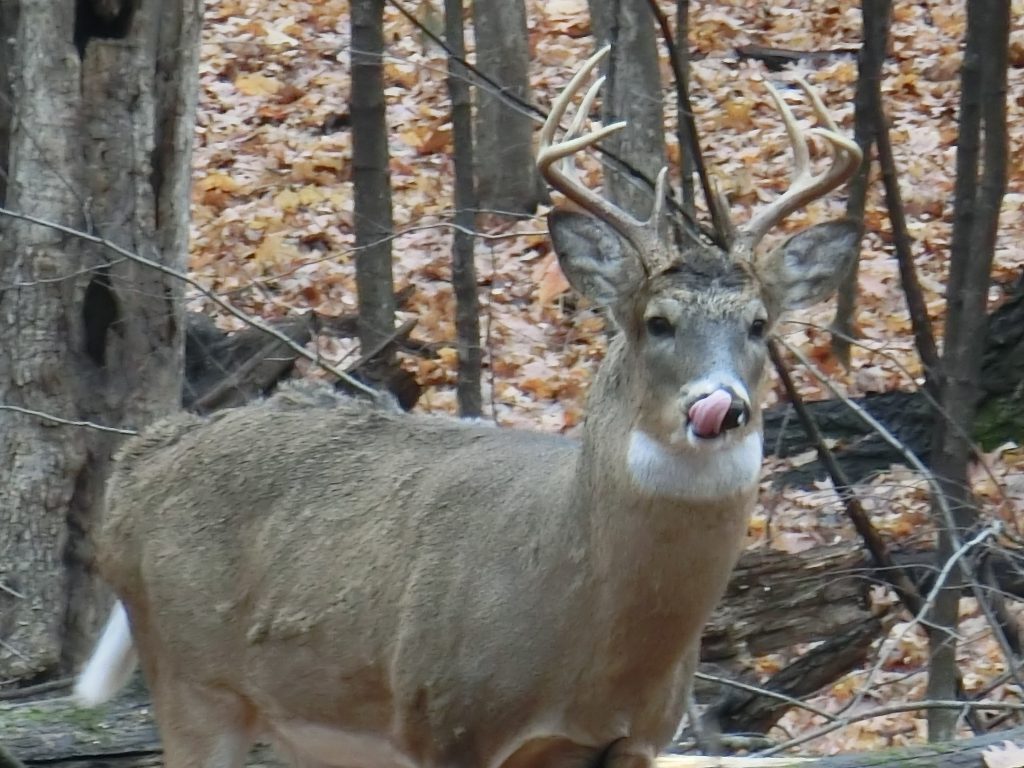
photograph by Dale Antonson
If you live in a suburban area, white tail deer can be pests eating hostas and vegetables in your garden; destroying a young tree by making it a rubbing post during the rutting (mating) season.
But white tails are the largest wild mammal in our neighborhoods, and are incredibly beautiful and sleek. There is something special about taking a morning hike and watching doe and yearling bound away with their tails “flagging” in the air.
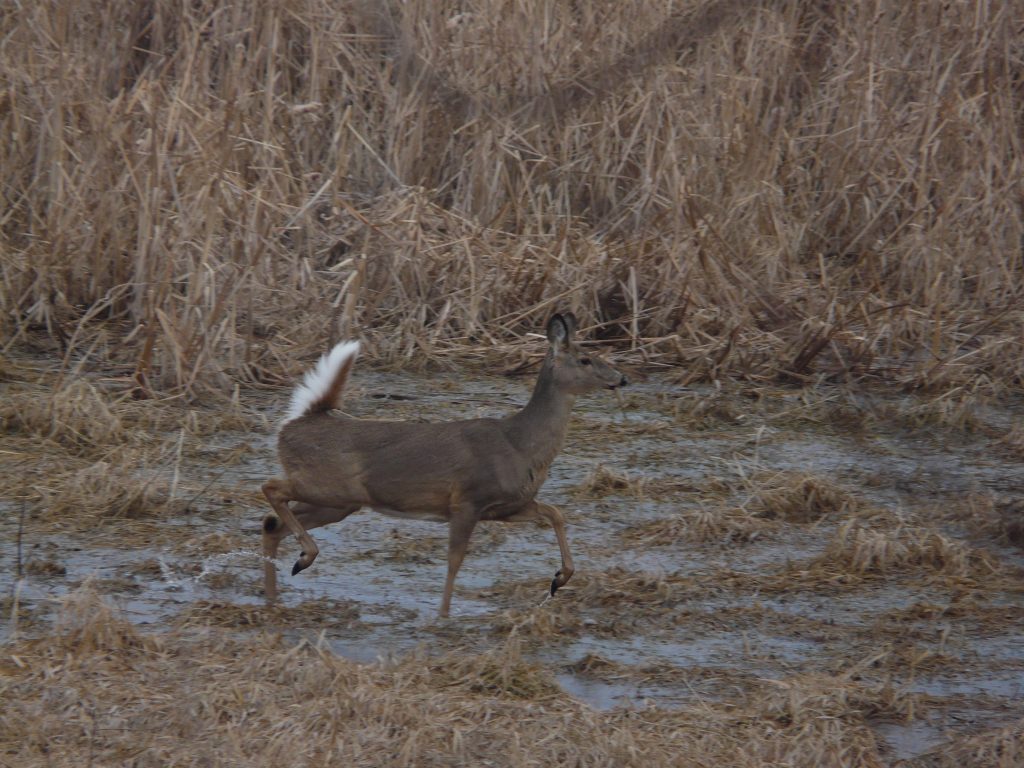
White-tail “flagging”
Photograph by Larry Wade
Below are some stories about white-tail encounters:
- My wife and I were hiking and our dog, Hug, was barking wildly ahead of us. Hug had recently weaned her pups. We rushed up to see a wobbly newborn fawn nursing from Hug’s teats. The dog was standing with a bewildered look on her face, not sure if she should try to take bite out of the fawn or lick it. Time slowed down to one frame per second. My wife, picked the fawn up and cradled it. Then we both realized what she has done and she laid the fawn down in the weeds. We continued down the trail, wondering if the whole event had even happened.
Larry Wade
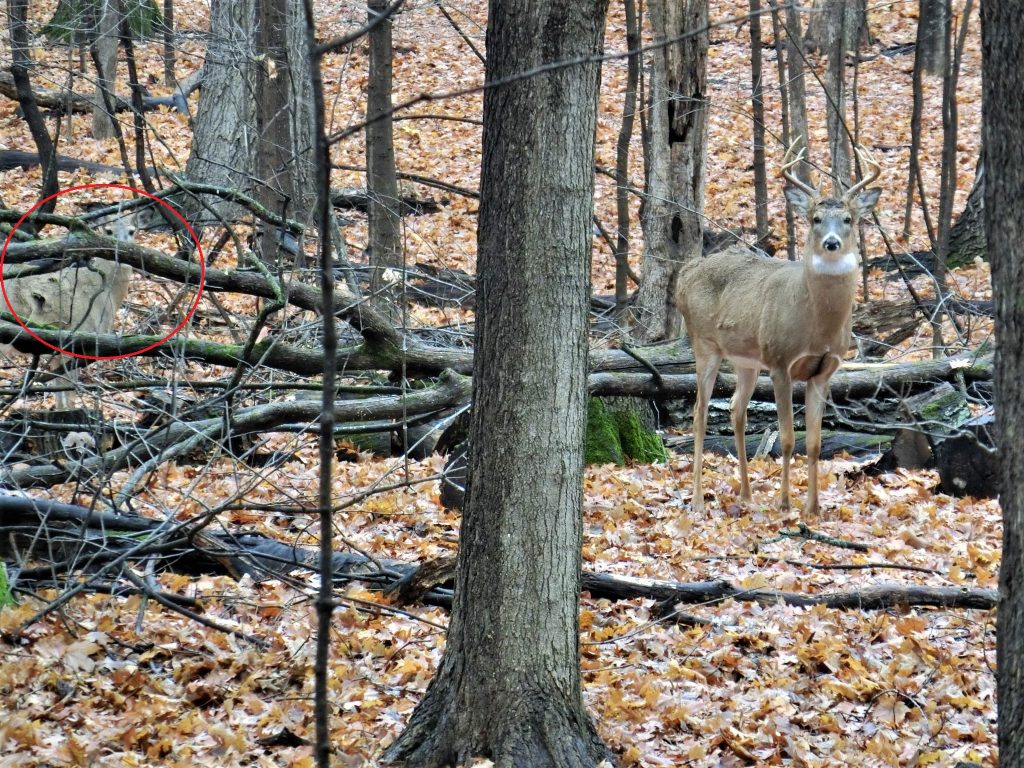
Photograph by Dale Antonson
- I had the good fortune to have a free hour to spend before our worship service last Sunday, so I ventured over to Lake Ann in Chanhassen for a hike in the beautiful forest there. I was alone, so I prefer to move through the woods carefully and quietly. I was pleased to come upon a pair of deer. I paused and took some of the photos for this posting. Look carefully in the photo above and you can see the doe who blends so well into the background (circled in red). As I began to walk away from them and the buck began to follow after me, which made me a little nervous. Thankfully, I was able to move up a hillside and lose his sight line.
story by Dale Antonson - Many years ago, I was working with a group of 6 graders at a nature center. We were doing a deer study near a deer feeding station. I was showing the students how you could tell the age of the deer by looking at the scat (poop). I was getting less than 10 % interest from the group. So, having a few milk duds in my pocket, I reached down pretending to pick up some deer scat. I said to the group, “You don’t need to be so freaked out, because deer scat tastes pretty good”. Then I popped the milk dud into my mouth. I’ll never forget the look on those kid’s faces. Their jaws dropped and eyes bugged out, as they tried to fathom what had just happened.
Larry Wade
If you have a favorite white tail story post it in the comments section.
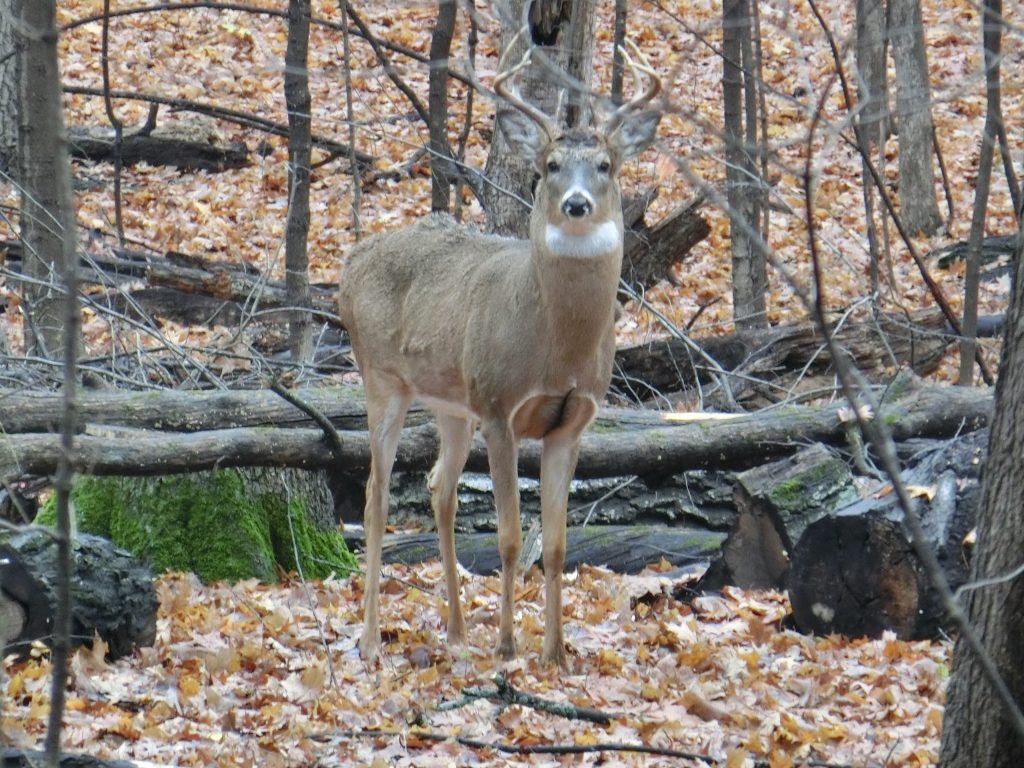
Photograph by Dale Antonson
Special Facts about Deer
Flagging is an alarm signal to other deer in the herd, telling the herd that danger is near. The white tail of the deer goes up and the deer bounds off. Before a deer flags, it may warn others in the herd by stamping the ground with its foreleg.
The antlers are grown and shed each year. In late spring, the buck’s antlers begin to grow. The antlers of a healthy buck can grow as much as 1/2 inch per day. The antlers are covered by a thin layer of skin called “velvet” which is hair-like, short and fuzzy. Under the velvet are thousands of tiny blood vessels. High levels of calcium in the blood helps the antlers grow. Also, during the breeding season, the neck swells to almost twice its normal size ( See Dale Antonson’s very first photo).
The size of the antlers depends upon the age and food available to the deer. In areas where there is very little browse (food) available, the antlers remain small even if the buck is an adult. In January and February, the antlers begin to drop off (ordinarily just one at a time). Antlers have been called “nature’s drug store”, since they are rich in vitamins and minerals. After falling on the forest floor, antlers are quickly chewed up by mice, squirrels, fox, and other animals of the forest.
Deer bed down in the evening and remain there most of the day. Deer will not bed in windy areas because they need to conserve their body heat in the winter. Most deer beds are found in areas protected from the wind, and on south-facing hillsides. South-facing hills are warmed by the sun sooner on cold wintry days and allow deer to conserve body heat.
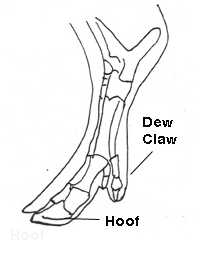 A deer actually walks on its hoof which are the toe nails of two toes. The other two toes are called dew claws and are positioned a few inches above the ground. Dew claws help slow a deer if it is sliding down a hill. The unique shape of the foot allows a deer to run up to 30 miles/hour in short bursts. Deer are also capable of jumping eight feet high from a standing position.
A deer actually walks on its hoof which are the toe nails of two toes. The other two toes are called dew claws and are positioned a few inches above the ground. Dew claws help slow a deer if it is sliding down a hill. The unique shape of the foot allows a deer to run up to 30 miles/hour in short bursts. Deer are also capable of jumping eight feet high from a standing position.
Deer are herbivores, meaning that they feed only on plants. Their diet varies with the season. In summer their main food is the leaves of green plants; while in the fall they may 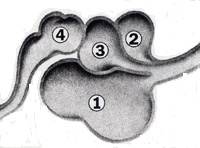 eat acorns; in the winter they eat primarily buds and twigs. A deer eats six to eight pounds daily of plant material. In the winter, they may get as little as two or three pounds and still survive. A deer has a total of 4 stomachs, allowing it to get more nutrition from the food it eats. The deer is a ruminant mammal. A ruminant feeds on plant material and then stores the food in its first stomach (known as a rumen). Then later when it laying down in a safe area, it “burps up” the food and re-chews it. This is a called “chewing the cud”. Many mammals ruminants including cows and goats. Chewing cud allows an animal to get more nutrition out of its food.
eat acorns; in the winter they eat primarily buds and twigs. A deer eats six to eight pounds daily of plant material. In the winter, they may get as little as two or three pounds and still survive. A deer has a total of 4 stomachs, allowing it to get more nutrition from the food it eats. The deer is a ruminant mammal. A ruminant feeds on plant material and then stores the food in its first stomach (known as a rumen). Then later when it laying down in a safe area, it “burps up” the food and re-chews it. This is a called “chewing the cud”. Many mammals ruminants including cows and goats. Chewing cud allows an animal to get more nutrition out of its food.
Deer have excellent eyesight and can detect the slightest movement. Even the blinking of an eye can cause a deer to “bolt”. However, deer are color blind. So if you are hunting and wearing “blaze orange” for hunter safety, deer will not be afraid of the color. Their hearing is excellent and their ears can move, allowing them to pick up sounds of possible danger. Possibly their strongest sense is their ability to smell a scent from a distance of over 1/3 of a mile.
Deer Population Study
Do you have a deer herd in your neighborhood? What is the population make-up the herd? By recording some simple field observations, you can get a good idea what age groups of deer live in your neighborhood. Below are three tools for studying deer populations including: scat analysis; measuring the size of deer beds; and analyzing hoof size.
What to do: Go out into woods looking for deer signs: including scat, tracks, and beds. You will need a tape measure to determine the deer bed size. When it comes to analyzing scat, count a clump of scat as one observation. Make a tally for each of the signs that you find. The number of tallies that you make for each age class, will give a good idea what the population structure is in your neighborhood.

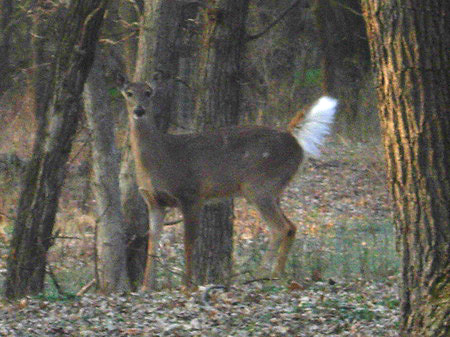
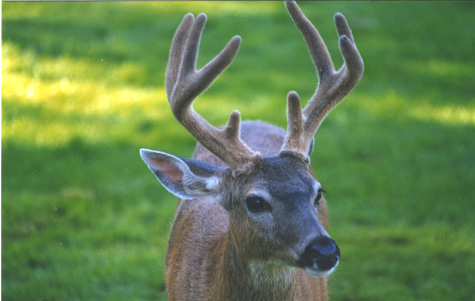
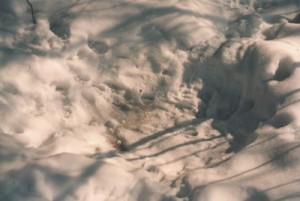
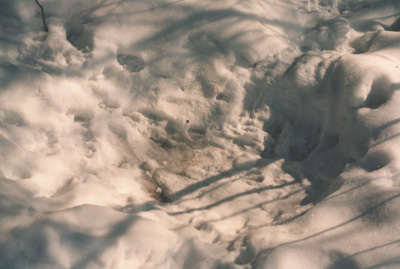
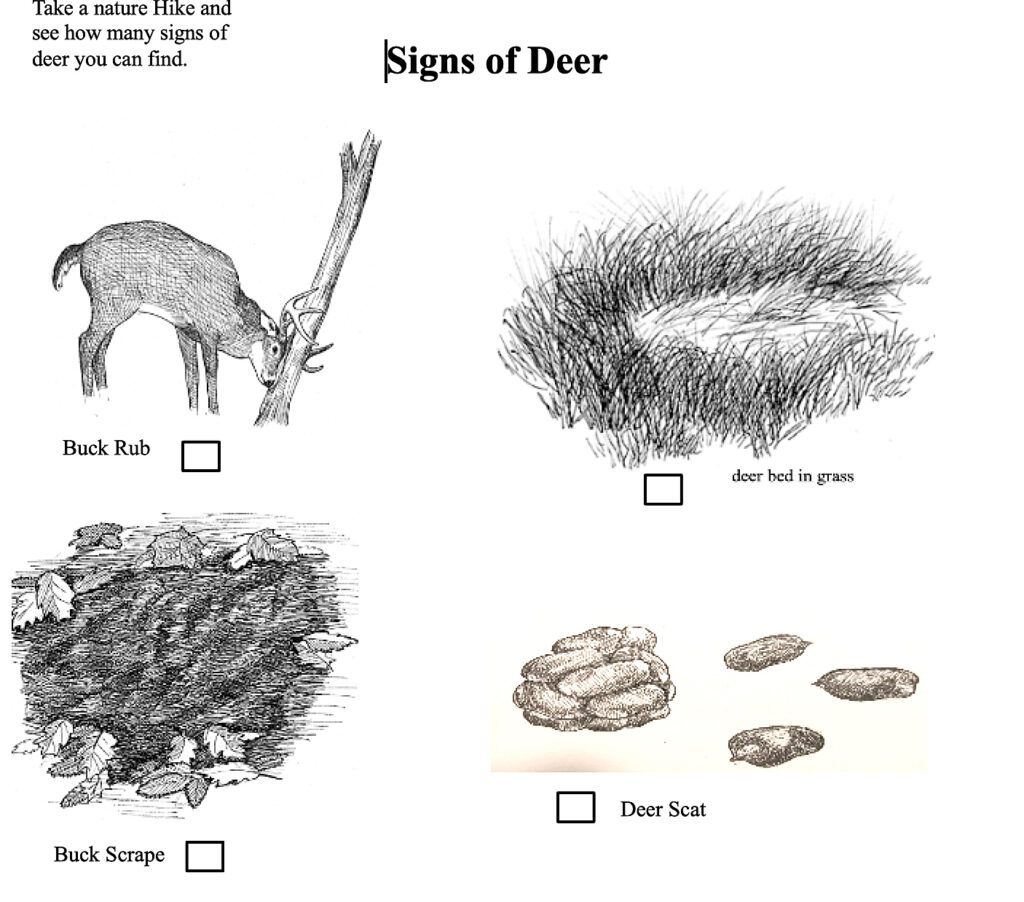
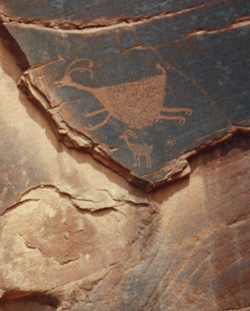



Excellent presentation of fellow creatures on the Planet. Native Americans have always known them as Brothers and Sisters
Once again another awesome posting from “The Old Naturalist.” very informative and funny too. You may run out of Milk Duds. I’ll see what I can do !
Thank you as always !